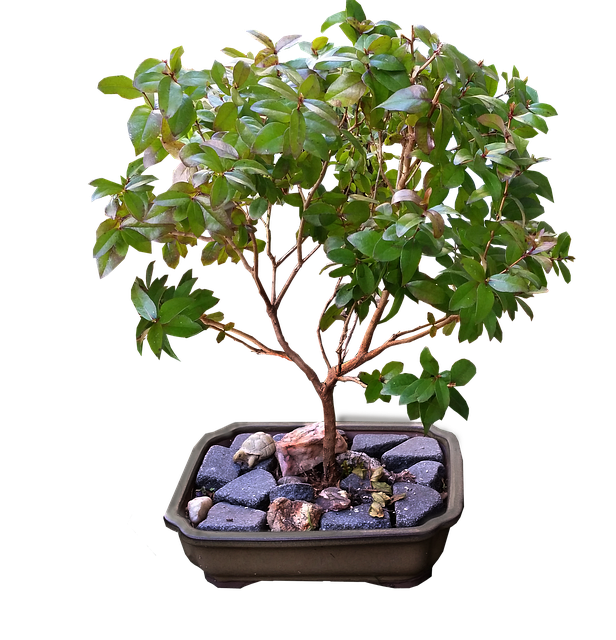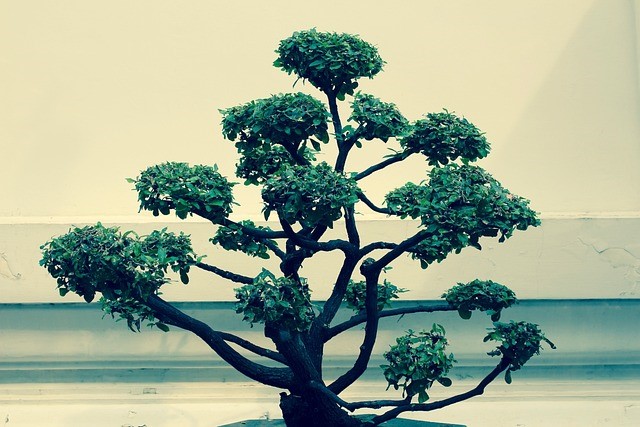Do Bonsai Tree Tools Vary between Tree Types?
Yes, bonsai tree tools do vary between tree types. Bonsai tree tools, which are important for maintaining the health and aesthetics of bonsai trees, are not a one-size-fits-all solution. For example, if you have both small and large trees, you will need different sizes of scissors.
Different tree types require different tools to prune, shape, and care for them. Each tree, whether it is a conifer, deciduous, or tropical tree, has its own unique characteristics and growth patterns.
As a result, specific tools, such as concave cutters, knob cutters, root shears, and branch benders, are necessary to properly care for and shape each tree type.
The use of the correct tools ensures that the bonsai tree remains healthy and its growth is controlled, allowing it to thrive as a miniature version of its larger counterpart.
Why Do Bonsai Trees Need Unique Requirements?
Bonsai trees require unique care and specific requirements because they are miniature versions of full-sized trees and shrubs that have been carefully cultivated to create a compact and aesthetically pleasing appearance.
Here are some reasons why bonsai trees have unique requirements:
Size and Scale: Bonsai trees are small, often in the range of a few inches to a few feet tall. Their reduced size means that they have limited resources available for growth and maintenance, which necessitates special care.
Limited Soil and Pot Size: Bonsai trees are typically planted in shallow pots with limited soil volume. This constraint means that the soil dries out more quickly, and the roots have less room to grow, which affects their water and nutrient needs.
Pruning and Training: Bonsai trees require regular pruning and training to maintain their miniature appearance. This involves precise and sometimes intricate techniques to shape the tree as desired.
Watering: Bonsai trees need careful attention to watering. Overwatering or underwatering can be harmful to their health, and the watering needs can vary depending on the species, pot size, and environmental conditions.
Fertilization: Because bonsai trees are grown in small containers, they rely on the nutrients provided through fertilization. Special bonsai fertilizers are often used to ensure the tree gets the necessary nutrients to thrive.
Sunlight and Temperature: Bonsai trees have specific light and temperature requirements, which can vary based on the species. Proper placement and protection from extreme conditions are essential for their well-being.
Soil Composition: Bonsai trees require a well-draining soil mix that provides adequate aeration and water retention. Specialized bonsai soil mixes are commonly used to meet these requirements.
Repotting: Bonsai trees need to be repotted periodically to refresh the soil, trim the roots, and maintain their health and size. The frequency of repotting depends on factors such as the tree’s age and growth rate.
Pest and Disease Management: Bonsai trees can be susceptible to pests and diseases, and their small size makes it easier for problems to become severe. Regular monitoring and treatment are important for their well-being.
Aesthetic Considerations: Bonsai is an art form, and the care of these miniature trees is often guided by aesthetic principles, such as balance, proportion, and harmony. The unique requirements of bonsai care help achieve these artistic goals.
Essential Bonsai Tools For All Tree Types
When it comes to taking care of bonsai trees, having the right tools can make all the difference. Each tool is carefully designed for a specific purpose, helping bonsai enthusiasts to shape, prune, and maintain their trees with precision.
Pruning shears:
These are a must-have tool for any bonsai enthusiast. Pruning shears are used to precisely trim small branches and twigs, shaping the overall appearance of the tree. The blades are designed to make clean and accurate cuts, promoting healthy growth and preventing any damage to the tree.
Concave branch cutters:
Concave branch cutters are essential for removing larger branches. The concave shape of the cutting edges helps create a clean and smooth wound, allowing the tree to heal more quickly and effectively. This tool is crucial for maintaining the aesthetic balance of the bonsai and preventing any unnecessary scars.
Wire cutters:
To shape and train bonsai trees, wire is often used to guide the growth of branches. Wire cutters are specifically designed to effortlessly remove wire without causing any damage to the tree. With a sharp cutting edge and the right leverage, wire cutters ensure precision and accuracy.
Root rake:
Bonsai trees require regular root maintenance to ensure their health and overall development. A root rake is used to carefully comb through the roots, allowing for proper soil aeration and the removal of any entangled or dead roots. This promotes healthy growth and helps prevent root rot.
How These Tools Are Used On All Bonsai Tree Types?
No matter the type of bonsai tree you have, these essential tools can be used universally. Pruning shears and wire cutters, for example, are necessary for shaping and maintaining the desired form of the tree, while concave branch cutters and root rakes aid in the health and growth of any bonsai variety.
By having these tools at your disposal, you can confidently care for your bonsai tree, regardless of its specific species. Each tool carries its own importance and function, ensuring that your bonsai remains well-maintained and visually pleasing.
Specialized Tools For Specific Bonsai Tree Varieties

Specialized tools cater to the unique needs of each bonsai tree variety, ensuring precise care and maintenance. These tools are designed to address specific characteristics and requirements of different types of bonsai trees, helping enthusiasts achieve the best results in their cultivation efforts.
| Tool | Description |
| Bud scissors | Used to trim buds, shoots, or branches with precision, avoiding damage to surrounding foliage. |
| Concave branch cutters | Essential for removing thicker branches without leaving noticeable scars, allowing the bonsai to heal more effectively. |
| Knob cutters | Specifically designed for removing prominent knobs and calluses on the trunk or branches, promoting smooth and natural healing. |
| Jin pliers | Facilitates the creation of jin, or deadwood, an essential aspect of some bonsai styles, which adds character and endurance to the tree’s overall appearance. |
How The Size, Shape, And Growth Habits Of A Tree Impact Tool Selection?
The size, shape, and growth habits of a bonsai tree directly influence the type of tools needed for its care. Small-sized bonsai trees require delicate tools with precise cutting edges and narrow tips to maneuver through tiny branches and foliage.
On the other hand, larger bonsai trees may require stronger and more substantial tools capable of handling thicker branches and tougher wood.
The shape of the tree also affects tool selection. For instance, if you have a bonsai tree with intricate and fine branching patterns, you may need tools such as twig cutters to achieve precise cuts without damaging the tree’s aesthetic appeal.
Similarly, for trees with dense foliage, shears with curved blades may be ideal for shaping and thinning out the foliage to maintain its density and overall appearance.
Growth habits, such as the direction of growth or the tendency to develop heavy branches, also impact tool selection.
For example, if your bonsai tree tends to grow dense and unruly foliage, you may require tools such as knob cutters or branch splitters to control the growth and maintain a desirable shape.
How Different Tree Species May Have Varying Tool Requirements?
Bonsai trees come in a wide variety of species, and each species has its unique characteristics and requirements. Consequently, different tree species may necessitate specific tools to address their specific needs. For example:
| Tree Species | Corresponding Tool Requirements |
| Juniper Bonsai | Bonsai scissors for foliage trimming, branch cutters for thick branches, and concave cutters for shaping the trunk and branches. |
| Pine Bonsai | Mistletoe pliers for needle removal, root cutters for root pruning, and jin pliers for creating deadwood effects. |
| Maple Bonsai | Buds shears for precision pruning, wire cutters for applying and removing wire, and grafting knives for propagation techniques. |
Understanding the specific requirements of different tree species will help you choose the appropriate tools for optimal care and maintenance.
Frequently Asked Questions
Can Any Tree Be Used For Bonsai?
Yes, not all trees can be used for bonsai. Only certain tree species with small leaves and branches are suitable for bonsai cultivation. Some common bonsai tree types include juniper, pine, maple, and ficus. Choosing the right tree is crucial for successful bonsai growth.
Can I Use Regular Scissors For Bonsai?
Regular scissors are not recommended for bonsai because they can damage the delicate branches. Bonsai scissors are designed with sharp and precise blades to make clean cuts without causing harm. Using regular scissors may result in poor pruning and hinder the growth of your bonsai tree.
What Are The Tools Used For In Bonsai?
Tools used in bonsai include pruners, concave cutters, wire cutters, tweezers, scissors, branch benders, root hooks, and brushes. These tools help with shaping, pruning, wiring, and maintaining the health of the bonsai tree.
Conclusion
Bonsai tree tools may vary between different tree types. It is essential to consider the specific needs of each tree species when selecting the appropriate tools. By understanding the unique characteristics and requirements of your bonsai tree, you can ensure the proper care and maintenance of your miniature masterpiece.

